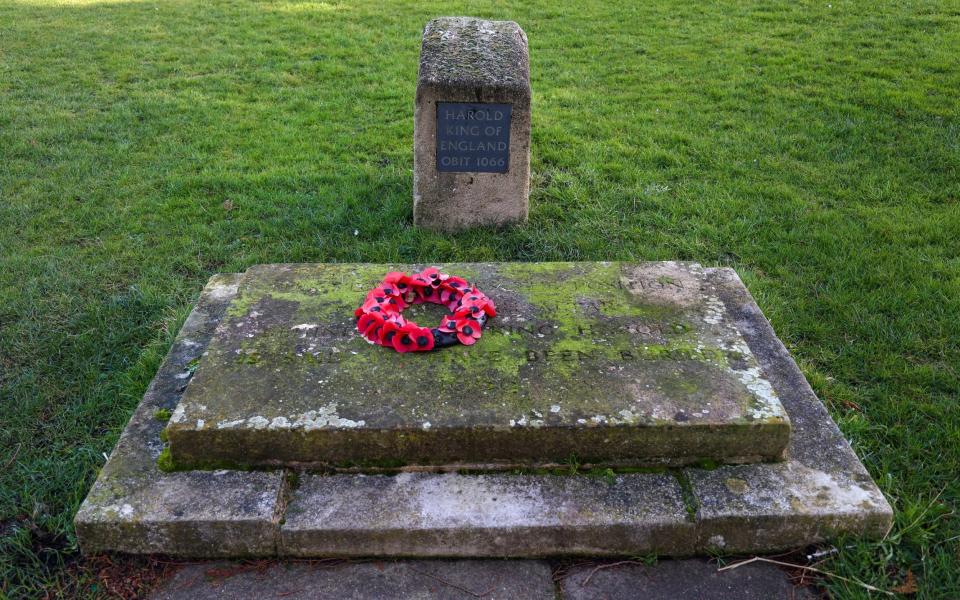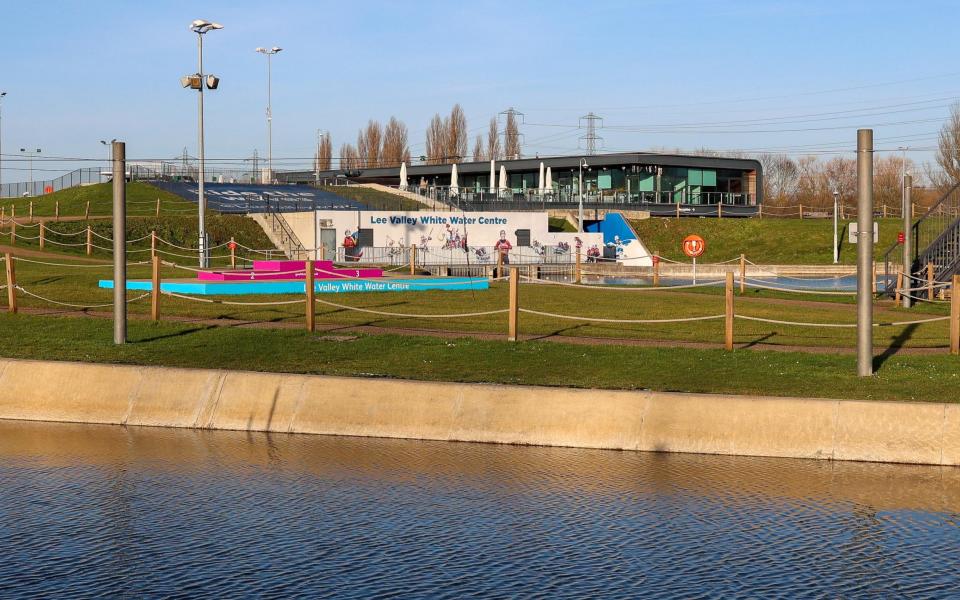Roaming in the Silicon Valley of Hertfordshire

When I recently Googled “Waltham Cross”, the top news result was a witness appeal following an assault. Second was a story about winners of the People’s Postcode Lottery. The third, however, didn’t quite fit the same mould of local news: “Google to build £800m data centre in Waltham Cross,” it read.
Google’s new complex, just off the A10, will be the company’s first major data centre in the UK. This means that when you use Google Search, or Maps, or YouTube, your device will likely be firing 0s and 1s just outside the M25. Hundreds of new jobs will be made. So what will Google’s new employees find in Waltham Cross, Hertfordshire’s very own Silicon Valley?
My day begins at the Eleanor Cross: the centre of town, according to Google Maps. There were originally 12 of these across the East of England, commissioned by King Edward I in the late 13th century in memory of his wife. Only three of the original Eleanor Crosses remain wholly intact: this one, and those in Geddington and Hardingstone, both in Northamptonshire.
Waltham’s is well restored, and its future feels safeguarded by the pedestrianisation of its surroundings; though on my visit, the monument had a white van parked to one side and a mobility scooter to the other, with men drilling a big hole nearby. An accordion player did his best to lift the mood, before he stopped to yell at somebody who had accidentally kicked his coin case.
It is an incongruous setting for such a historic monument. If a pigeon were to spin 360 degrees on its pinnacle it would see a tattoo shop, a Polish supermarket, a place called Fishy Delishy, a Chinese medicine centre, a gold merchant, a video shop (called Moondance), a baklava shop, a bookies, a slot house and somewhere that claims to sell the best Deutsche doners. Impressively international, really, for one of the biggest Brexit-voting boroughs in the country.

The truth is that Waltham Cross is one of the most deprived areas in Hertfordshire, with income and education levels far below the county average. The Google data campus might be part of a brighter future for the town, but for now there are no flat-white parlours, no whole-food delis. Silicon is here, sure, but only in the form that is implanted into breasts and bottoms at its numerous cosmetic surgeries. So I am thankful to learn, after a quick Google search, that I would do well to travel just two miles east, across the Hertfordshire/Essex border to Waltham Abbey, to find a richer visitor experience.
The sacred heart of Waltham Abbey
I began, as any visit to Waltham Abbey should, with a visit to the town’s most sacred site: Tony’s Pie and Mash Shop.
Tony Lane, originally from Mile End, moved to the Waltham Abbey area aged 12. “When I first moved here, it was like moving out into the country,” he laughs. “My dad had an old Zodiac. When they were building the estate, we used to come and visit, and we’d take a packed lunch. My mum would get the flask out.”
Despite its proximity to London, Waltham Abbey does have the feel of a stand-alone town. “Not just part of the London suburb splurge,” in the words of local estate agent Peter Roffey. Perhaps it’s because you’re just beyond the M25, or maybe the cut-off feel is due to the absence of a train station, something local campaign groups have long wanted to introduce (neighbouring Waltham Cross has connections to Liverpool Street).

None of that is of great concern to Tony, whose pie-and-mash emporium had a queue forming at noon. Most of his customers travel from afar to try his famous pie, mash and liquor (from £5.50) or – slightly less popular these days – eel and mash dishes (from £8). One guest has travelled particularly long distances to get his fix.
“He first came into the shop years ago, when he was at Real Madrid,” says Tony. Behind him is a wall covered with old boxing photos, including some of himself as a young man. But among the bloodied faces there is a signed photograph of David Beckham. After that surprise visit, the former England captain became a loyal customer, and before long Tony was asked to hand-deliver pies to his home.
“He’s a lovely fella,” he says, cool as you like.
‘A market town with a village mentality’
From the main square – where a market is held twice weekly, on Tuesdays and Saturdays – I walk down pretty, pedestrianised Sun Street. Mainly independent shops flank it and, as a centrepiece, a colourful mosaic marks the Greenwich meridian. For the grand opening in 2016, morris dancers (west) and a traditional Chinese dance group (east) were supposed to convene at the line, although when the day came, the Chinese troupe didn’t turn up. Apparently some locals improvised and did their best attempt at a traditional Chinese dance to fill the void. Sadly, or perhaps fortunately, no known footage of the event exists.

Andrew Crowley, a chipper local funeral director, has lived here since 1990. I bump into him at approximately 0.00000001 degrees east.
“I describe it as a market town with a village mentality,” he says. “It can take you 10 minutes to walk to the town hall, which is a two-minute walk, because people stop to chat. It’s a close-knit community.”
People I meet are indeed keen to talk, and seem proud of the local history. Several point me to the Epping Forest District Museum and Library at the end of Sun Street, which tells the story of the area through items including the Waltham Abbey Bible and a woolly mammoth tusk. It is believed the beasts roamed the Lea Valley during the last Ice Age. And this tusk, allegedly, was found just around the corner in the abbey grounds.

The resting place of a king (maybe)
Waltham Abbey Gardens, in the grounds of a former Augustinian abbey, form the grassy, peaceful heart of the town. Despite being the last religious community to close during the dissolution of the monasteries, in 1540, very little of the original Waltham Abbey remains beyond a 14th-century gatehouse and a bridge, plus the walls of a post-medieval house that was built after the dissolution.
Rewinding further back in history still, legend has it that King Harold Godwinson was interred at Waltham Abbey after his death at the Battle of Hastings, and a gravestone marks the spot where his remains may, or may not, lie. If true, it is as fine a place as any to rest. Get lost in the zig-zagging pathways of Cornmill Meadows (a Site of Special Scientific Interest), just behind the abbey grounds, and you feel quite cut off from the world.

“It might not have that slightly chichi cosmopolitan London vibe, but the proximity to nature kept me sane for a few years,” says Diana Jarvis, a photographer who lived in the area until 2019. “From my flat, I could be walking in the meadow – famous for dragonflies and damsel-flies in the summer – within about a minute. I hope more people discover the solace of nature and the intricacies of the Lea Valley ecosystem.”
Soon, it seems, a few more will. Like Waltham Cross, there’s little that links Waltham Abbey with Silicon Valley in California – it is 122 degrees west of here, almost half a world away. But what “the Abbey” does have is a history that cannot be control-alt-deleted. It has meadows and gardens to roam. It has pie and mash good enough for one of the most famous men on the planet. The Google lot will have plenty to discover in Waltham Abbey, if they take the time to search for it.
Things to see and do
Royal Gunpowder Mills
It is surprising that more people don’t know about Waltham Abbey’s Royal Gunpowder Mills, one of three that served the country and the only one to remain intact (it is said that Hitler didn’t bomb it in case the facilities could come in handy one day). The site stopped making gunpowder shortly after the Second World War, but the Ministry of Defence went on to run a secretive research centre from here until 1991. Today you can explore its 170 acres under the guidance of a wise volunteer in a rickety old Land Rover (ask for Brian, a true gent and a font of knowledge).

The Lee Valley White Water Centre
Opened ahead of the 2012 London Olympics, the Lee Valley White Water Centre is a fascinating place to visit. It is the most sophisticated purpose-built water sports centre in the country, and on my visit Team GB were in training ahead of the Paris Olympics. Even if you don’t fancy getting wet, anyone can explore the grounds, which have tiered picnic areas to watch the action, plus the Terrace Bar and Café, which hosts live music in the summer.

River Lee Country Park
The River Lee Country Park incorporates canal waterways, lakes and mills, with miles of cycleways and paths to explore. From here you could walk along tow-paths all the way to east London, if you so desired, passing the Olympic Park and through the hipster heartlands of Hackney.
Epping Forest
Only a couple of miles from Waltham Abbey is Epping Forest, the 6,185-acre former Royal Forest which served as a hunting ground in a previous life. It is a tapestry of ancient trees and wild flower meadows, with 176 miles of pathways to explore.
For more information about visiting Waltham Abbey, see visitessex.com, walthamabbey-tc.gov.uk and visitleevalley.org.uk. The Greater Anglia train from Tottenham Hale to Waltham Cross takes 13 minutes and costs £8.20 for an off-peak day return.

